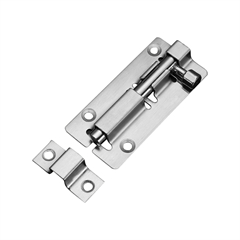Introduction: The door knob, a seemingly simple yet essential component of architecture and interior design, has undergone a fascinating evolution over centuries. From its humble beginnings as a practical necessity to its current status as a design statement, the door knob’s journey through time reflects changes in artistic styles, materials, and technological advancements.
Chapter 1: Early Utilitarian Knobs In ancient civilizations, doors were secured with basic knobs carved from wood or stone. These early door knobs were more functional than decorative, serving as essential tools to open and close doors securely. Examples from ancient Egypt, Greece, and Rome provide insights into the rudimentary yet ingenious designs of these early door knobs.
Chapter 2: Medieval and Renaissance Elegance During the Middle Ages and the Renaissance, door knob design began to incorporate elements of artistry and craftsmanship. Castles, cathedrals, and grand homes featured door knobs adorned with intricate patterns and motifs, often reflecting the architectural styles of the time. These knobs were typically made from metal and showcased the skills of blacksmiths and metalworkers.
Chapter 3: Victorian Opulence The Victorian era marked a significant shift in door knob design. With the rise of industrialization, mass production techniques allowed for more elaborate and decorative door knob designs. Brass and glass became popular materials, and door knobs were often embellished with ornate details, such as floral patterns, filigree work, and even semi-precious stones.
Chapter 4: Modern Simplicity The early 20th century brought a shift towards simplicity and functionality in design. Modernist movements embraced clean lines and minimalism, influencing door knob design as well. Door knobs became more streamlined and utilitarian, often featuring geometric shapes and smooth surfaces. Materials like chrome and steel gained prominence.
Chapter 5: Mid-Century Modern and Beyond The mid-20th century saw a resurgence of interest in design, giving birth to iconic mid-century modern door knobs. These designs blended form and function, often focusing on organic shapes and innovative materials. Plastic and acrylic door knobs made their appearance, and designers like Charles and Ray Eames left their mark on this era.
Chapter 6: Contemporary Eclecticism Today, door knob design knows no boundaries. Contemporary designers draw inspiration from various periods and cultures, resulting in a diverse array of door knob styles. High-tech materials, such as smart locks and touch-sensitive surfaces, have also transformed the functionality of door knobs, merging design with cutting-edge technology.
Chapter 7: Sustainability and Innovation In recent years, a growing emphasis on sustainability has influenced door knob design. Recycled materials, eco-friendly production methods, and designs that stand the test of time have gained importance. Innovations continue to emerge, including energy-generating knobs and those integrated with biometric authentication systems.
Conclusion: The Enduring Symbol The evolution of door knob designs mirrors the evolution of architecture, culture, and technology. From humble beginnings to intricate works of art, door knobs have transcended their utilitarian roots to become symbols of design, history, and personal expression. As technology and design continue to evolve, the door knob remains a tangible connection between our past, present, and future.








